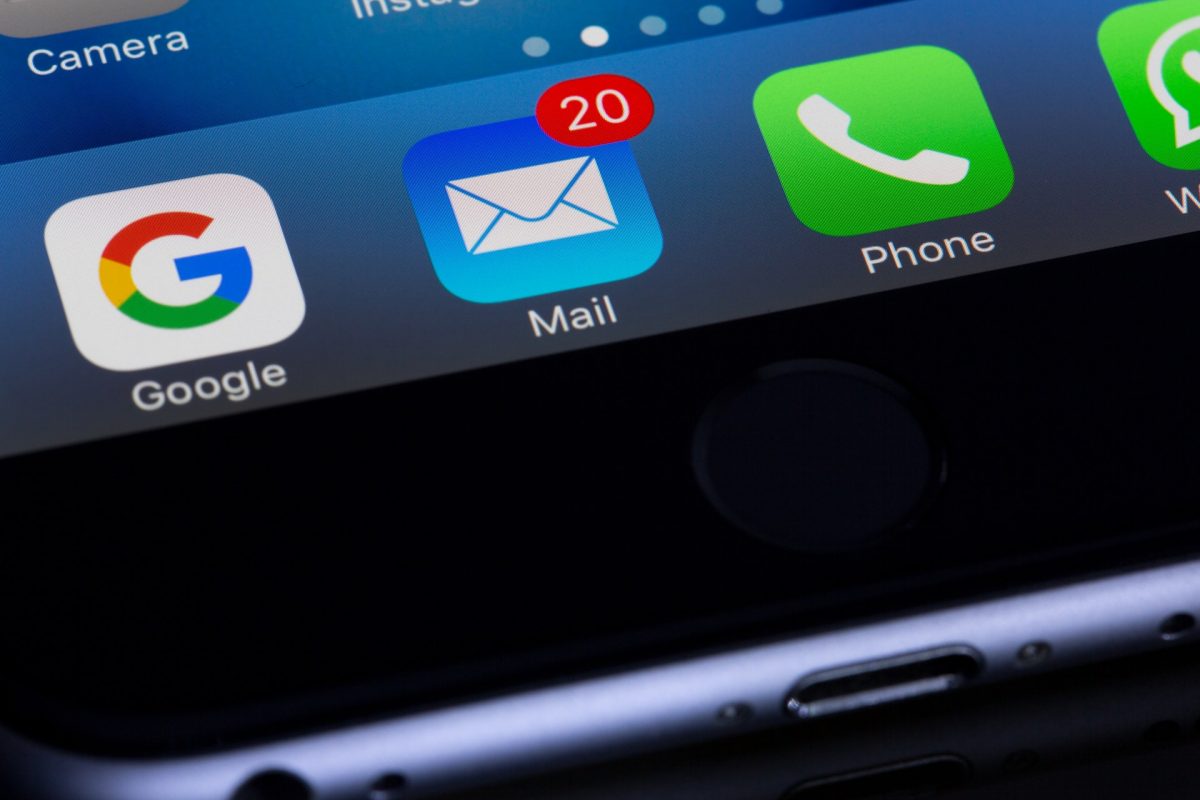“Do Email”. Sounds like what a boomer might say. Sort of like The Facebook or The World Wide Web. But, I digress. And the “perfect subject line”, aren’t they all pretty much the same?
In all seriousness, sure, everyone knows how to email. Obviously. But from the amount of terrible cold emails I see come through my inbox, so few people actually seem to know how to “do email” the right way.
Over the course of a few posts, I’ll break down some key observations I’ve made over my 15 years in sales and provide some suggestions with regards to how to improve your email skills to get better and more frequent responses.
I’ll cover topics like:
- Email Length and “Visual appeal”
- The perfect email signature
- Key points to cover
- Templating
- Follow-up cadence
In this first post, however, let’s start at the top with… crafting the perfect subject line.
Let’s First Examine the Full Sales Funnel
When we’re reaching out to someone who doesn’t know us and probably doesn’t want to talk to us, how can we catch their attention?
This might go without saying, but we’re not special (sorry not sorry). Depending on the industry and the role of a prospect within that industry, they are likely sending/receiving around 130 emails per day. The chance of ours getting read before we’ve established rapport with the recipient certainly isn’t great.
Just like the sales process as a whole, this section of that process—email—should follow the same broad principle: Create a reason for our prospect to take the next step.
If we zoom out on the broader sales process (open → demonstrate value → gather information → offer solutions → close → deliver on your promise), we see that each step nudges our prospect along to the next one.
When zooming in on each step, we then see a similar pattern of smaller steps, and within the “open” phase we have micro-steps that nudge the prospect towards that next phase of demonstrating value. While there are numerous ways to “open” a prospect, email is obviously one of the most popular.
When further homing in on the micro-goal of opening via email, we’ll again see a few “nano-steps” within it, one of which, of course, is the perfect subject line.
The overarching goal of our email should be to pique curiosity with the hope that this curiosity prompts action.

The Goal of the Subject Line
Keeping with the above theme, the goal of the perfect subject line is to pique the prospect’s curiosity to get them to simply open the email (take action).

If that holds true, then we should not do anything to distract them from that goal. This indirectly implies that we should be somewhat vague in our subject line, as counterintuitive as it may sound. If our subject line is a concise summary of what’s about to appear in our email, then the curiosity is gone and so is the incentive for our prospect to actually open and read the email.
Think about the following subject line: “Salesforce x ProspectBrand: Let’s discuss your 2H strategy”.
At first glance, this sounds like a solid subject. It’s clear, concise and straightforward. But if we dig in a bit, it’s a summary of what our email is going to be about. There is nothing to pique interest nor is there a hint of adding value to the recipient.
Many recipients of that email will interpret this as “This person wants to waste my valuable time discussing how I can give them our money.” Who wants to click on that? And more broadly, who wants to waste their time giving value to a stranger when that person hasn’t shown any value of their own first?
4 Perfect Subject Line Strategies

While there is no “silver bullet” email subject line, there are a few strategies that have yielded above-average results for me over the years. Let’s look at 4 of my favorites:
- The “Value-Add”
- The “Everybody’s Doing It”
- The “Indirect Intrigue”
- The “Generic Zinger”
Numbers 1 and 2 are simple and solid options that should always be considered.
Strategy 1: The “Value-Add“
Show in the subject line that our email is going to add value for the recipient instead of taking it away.
“3 Easy ways Hearst can use your CRM data to drive more targeted ads” or “Here’s how we can optimize your ads towards sales instead of clicks”.
Sure the above can seem a little clickbait-y, but they do pique interest for specific recipients who have access to CRM data that they may want to leverage in a campaign. If we’re current on our industry’s trends and we use a subject line like this for the right recipient, there’s a solid chance that they open the email to check out those 3 tactics we suggest.
The pro of these subject lines are that they add value (assuming the topic is of interest to our recipient). The con is that we’ve shown your cards early. If they don’t care about the topic, they won’t click.
Strategy 2: The “Everybody’s Doing It“

Most customers want to stay ahead of their competition or at least get the inside scoop on what their competitors are up to.
“See how YourCompetitor XYZ used CRM data to drive more targeted ads with Hearst”
This is similar to Number 1, but it adds a cherry on top. Not only does this subject line show that our company is using a “buzzy tactic” like CRM data to drive success for clients, but we’re already using this strategy to drive success for their competitor.
Showing off great work we’ve done for a competitor provokes FOMO in the recipient and creates a sense of urgency to open your email.
Strategy 3: The “Indirect Intrigue“

Number 3 is a personal favorite of mine. When we’ve got something truly novel or otherwise unexpected (or can find a novel angle on an otherwise commodified good or service), curiosity is piqued and the recipient will, in theory, want to find out more. The key here of course, is finding something that genuinely feels novel.
“A pop-up LiquorBrandX tasting at a September wedding?” or “A pop-up liquor tasting at an upcoming PlannerNameX wedding?”
The above subject line has without a doubt garnered the highest response rate of any others that I’ve tried in all the time that I’ve been cold-emailing for Pour My Party.
What I love about this is:
- A “pop-up liquor tasting at a wedding”… is novel. There are few if any emails showing up in a distiller or wedding planner inbox referencing something like this.
- I am inserting their actual name in place of “LiquorBrand X” or “PlannerNameX”, so it’s specific to them. Yes, automated email software can fill-in-the-blanks like this, but as Dale Carnegie notes in How to Win Friends and Influence People, someone’s name is to them the “sweetest and most important sound in any language.”
- “…September wedding” in the one case, is specific and timely and creates a sense of urgency. If the prospect doesn’t respond, they’re missing out on something happening in September as opposed to something nebulous.
- The “?” shows that I am not telling, I am asking. I want their feedback. I have a question that they might be able to answer.
TRY THIS: Breaking down the “Indirect Intrigue” into these four constituent parts, how might you craft your own subject line with these points?
Strategy 4: The Generic Zinger

Number 4 is my last-ditch failsafe; a statement or question that doesn’t say anything specific, but does still promote intrigue.
When in doubt, “Keeping you in the loop…” is a great example of a generic zinger that I crafted from Thomas Freese’s “Secrets to Question Based Selling”. I love it because:
- Everyone wants to feel like they are in the know, and people don’t want to be “out of the loop”. You’re implying that this email is doing them a favor.
- The “…” ending, similar to the “?”, is a prompt in and of itself. It alerts the recipient that there is something more in the email that they should open to uncover.
The Generic Zinger idea isn’t new, but it does work. Here’s a great list of some others from the Hubspot blog, and Thomas Freese himself suggests the following examples:
- Two Questions…
- On second thought…
- Wanted to ask a favor…
- Would like your opinion about…
- Per George Thompson…
Conclusion: The Perfect Subject Line
Long story short, your email subject line should simply prompt the recipient to take action and open your email. Once they open your email, you’ll have a bit more space to lay out your “arguments” to push them another step down the path to purchase.
In future posts, I’ll share my favorite cold email “template” and some other email tips and tricks.
Of course, before you can do any of this, you’ll need your prospect’s email address. Find out how to get anyone’s email address in this post here. All of these posts are part of a framework I refer to as “The Soft Sell”, a way to be a better seller without being a slimeball. Learn more about The Soft Sell here.


Leave a Reply